|
|
Fairway

|
|
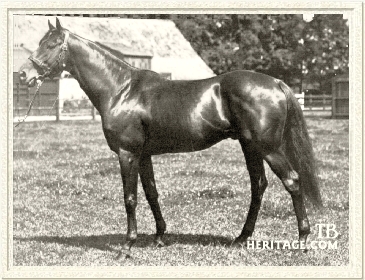 |
|
|
Produced by Lord Derby's enormously influential Stanley House Stud of the first half of the 1900s, the full brothers Pharos and Fairway proved as important a sire duo as any in the breed. Both sons of Phalaris, out of the mare Scapa Flow, generated male lines that proliferated around the world to the point of global domination.
|
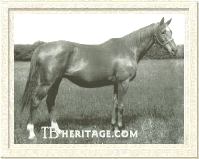
His dam, Scapa Flow | |
Fairway was the younger of the two, born five years after Pharos. Scapa Flow's first foal had been the Cup winner Spithead (by John O'Gaunt), followed by Pharos in 1920, and the undistinguished Pentland (by Torloisk) in 1923. When Pharos bloomed, Scapa Flow was put back to his sire Phalaris, getting Fairway in 1925. Two years after Fairway, Scapa Flow produced the 1,000 Guineas winner Fair Isle, then stakes winner Fara, both fillies by Phalaris; giving her five total stakes winners, four of them by Phalaris.
|
While Pharos was a neatly balanced middleweight resembling his dam's sire Chaucer, Fairway was made of a mold more like their paternal grandsire Polymelus, being leggier and lengthier, less stout in appearance, but of exquisite quality. Fairway also differed from Pharos in temperament, and could get nervous to the point of distraction, a quality that cost him a race on at least one occasion. What distinguished him above the rest of the competition, however, was an extremely long, effortless stride that made him seem to float over the ground.
Fairway came along in a year when the stable included another celebrity younger brother, the promising colt *Pharamond II, full brother to the champion two-year-old and classic-placed miler *Sickle (both By Phalaris out of Selene by Chaucer). Having a backup of this quality proved useful for the Derby stable when Fairway was unable to start.
Fairway on the Turf
Fairway's juvenile season in 1927 marked the last year George Lambton trained at Stanley House, but the great horseman knew what a jewel he had. He sent the colt out four times, and Fairway won all but one, missing in his debut, the Eglinton Stakes at York in May. The colt's inexperience cost him, and he finished sixth of fifteen, behind the winner Grandmaster. His next start was the Coventry Stakes at the Royal Ascot meeting in June, and he won the five-furlong test as he pleased by three lengths, in a field of twenty. In the July Stakes at Newmarket, he faced only eight others, and ran strongly to defeat the classy but ill-fated Hakim (who broke down and had to be destroyed later that season) by a head, with the good filly Jurisdiction in third.
Sent to Doncaster for the prestigious Champagne Stakes at six furlongs, Fairway won by two lengths over the filly Nance, but he came back sore and was put on the sidelines for the rest of the season. Sent in his stead, Pharamond II won the major prize, the Middle Park Stakes. On the Free Handicap, Fairway, Hermit II and Buland were the joint highweights, all at 126 pounds, with Flamingo and Gang Warily at 122. (Pharamond II was rated at 110.)
At the end of the season, after Lord Derby implied it was time he thought about retiring, Lambton quit the position as stable trainer in a huff, and went out on his own. Replacing him was Frank Butters, who had his hands full keeping the delicate machinery of Fairway in top class condition.
The stable star prepped for the 2,000 Guineas, but mouth abcesses forced him to the sidelines. (In the classic, Pharamond II ran a game fourth behind Flamingo). Fairway won the ten furlongs Newmarket Stakes, but the crowd at Epsom for the Derby Stakes drove him over the top and the colt washed out, running unplaced behind Felstead. In the Eclipse Stakes over ten furlongs, Fairway vindicated himself, beating Royal Minstrel by eight lengths, and returned in the fall with a facile victory in the St. Leger Stakes, defeating Palais Royal II and Cyclonic. His final start of the season was in the Champion Stakes in October at Newmarket, and he beat the filly Foliation by a neck to put a finish on his championship with four wins in five starts.
Fairway returned at four, and won five of six races. His season debut was in the Burwell Stakes at Newmarket over twelve furlongs, which he won with no difficulty. Backed up to less than a mile in the Rous Memorial at Ascot, he won again, then stretched out for a third straight victory in the Princess of Wales's Stakes (twelve furlongs at Newmarket). In the Eclipse Stakes, Fairway was upset by an improving Royal Minstrel, who won the ten furlongs contest by four lengths. Fairway won his second Champion Stakes, although only Cyclonic showed up to face him. The Derby colt followed up with a three lengths win over Palais Royal II in the Jockey Club Cup at two and a quarter miles, also at Newmarket.
Fairway was pointed for the Ascot Gold Cup at five, but never faced the starter, although he won a trial over the full two and a half mile distance, beating the year younger Bosworth by a length. Bosworth went on to win the classic in Fairway's absence, the latter having blown a tendon in prepartion.
Fairway at Stud
Fairway was retired to Woodlands Stud, Newmarket, where he made his first season as a six-year-old in 1931. Here, he replaced brother Pharos who had stood at Woodlands for the 1926, 1927, and 1928 seasons, after which he was sent to France. Fairway reigned at Woodlands, alongside Hyperion, as two of the most important stallions on the planet. In 1946, Fairway started having difficulty with his hindquarters, and when paralysis set in, he was destroyed in November of 1948 at the age of 23.
Fairway forged a spectacular stud career, leading the sire list four times, 1936, 1939, 1943, and 1944; he was also second in 1935 (with his first foals just three-year-olds), 1937, 1942, and third in 1946. He sired six English Classic winners, and although his forte was stamina, his offspring tended to run shorter, perhaps due to their delicate constitutions and temperaments. He sired Derby winners Blue Peter and Watling Street, 2,000 Guineas winners Blue Peter, Pay Up, Kingsway (II), and Garden Path (a filly), and 1,000 Guineas winner Tide-Way. |
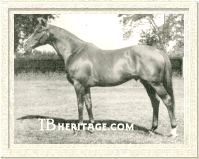
Blue Peter | |
Fairway's greatest winner was BLUE PETER (ch.c. 1936 out of Fancy Free by Stefan the Great). Bred by the Earl of Rosebery at Mentmore Stud, he was a beautiful, blazed-face horse and the popular champion of 1939. In two starts at two, his best effort was second in the Middle Park Stakes to American-bred Foxborough (a brother to America's Gallant Fox). At three, Blue Peter was undefeated in four starts including the Blue Riband Trial, 2,000 Guineas, Derby and Eclipse Stakes. There was talk about a match race with the French champion Pharis (by Fairway's brother Pharos), but war broke out in Europe in September 1939 and those dreams ended. |
|
Blue Peter went to stud at Mentmore and was a successful sire but disappointing in light of his own ability. He got an odd mix of precociousness and stamina, siring Ocean Swell (Derby and Ascot Gold Cup), Botticelli (champion at three in Italy and Ascot Gold Cup), Tiepolo (Italian St. Leger), Peter Flower (Champion Stakes, Hardwicke Stakes), Blue Train (Newmarket Stakes), Skye, Messmate (Coventry Stakes), Blue Prelude (Lancashire Oaks), Eyewash (Lancashire Oaks), Mermaid II (Falmouth Stakes), Running Blue, Star Spangled Banner, Masthead, First Consul, Kisaki, Clutha, Blue Lamp, Fluorescent, and Blueskin. Blue Peter's sons did little as sires, but his daughters became very useful broodmares. |
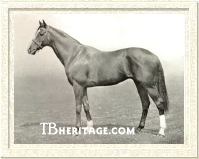
Fair Trial | |
Fairway's most influential son, however, came in his first crop, in the form of FAIR TRIAL (ch.c. 1932 out of Lady Juror by Son-In-Law). Bred by John A. Dewar, at Homestall Stud, East Grinstead, Sussex, he was one of the eight stakes winners out of his dam, besides Riot (dam of Commotion), and Sansonnet (dam of Tudor Minstrel). Like Blue Peter, Fair Trial was also an attractive chestnut horse with a blaze, although he inherited the white legs of his granddam Lady Josephine. |
Unraced at two, at three he won the Longleat Stakes, Queen Anne Stakes, Select Stakes, and Ormonde Plate, all between seven furlongs and a mile. At four, he won the Newmarket Spring Plate, Rous Memorial Stakes, and Lingfield Park Plate. Proven a good but not great miler, he retired back to Homestall Stud, and here established a dynasty based on precocious speed.
Fair Trial was the leading sire in 1950 when his son Petition won the 2,000 Guineas, St. Leger Stakes and Eclipse Stakes. Besides Petition, his leading winners were 2,000 Guineas and St. Leger winner Palestine, 2,000 Guineas winners Court Martial and Lambert Simnel, 1,000 Guineas winner Festoon; also *Luminary II, King's Counsel, Donore, King Bruce, *Fairaris, and *Fair Truckle, the latter two stakes winners in the U.S.
Typical of a speed sire, Fair Trial got many successful sons at stud and these dispersed the blood of Fairway more than any other source. These included *Court Martial (Leading Sire in 1945 in Great Britain and imported with continued success in the U.S.; sire of Major Portion, Timandra, Ratification); Petition (Leading Sire in 1950; Petite Etoile, Petingo, March Past, Runnymede, *Petitioner, etc.); Palestine (sire of Pall Mall, The Rabbi, Palariva), Ballyogan (sire of 2,000 Guineas winner Ki Ming; and dam's sire of Cox's Ridge), Advocate (in Argentina; dam's sire of *Forli), Fairthorn (in South Africa), Newtown Wonder (in Australia), Fair's Fair (in New Zealand), Luminary II, *Fairaris (in Canada), *Fair Truckle, and *The Solicitor II, the latter two in California. |
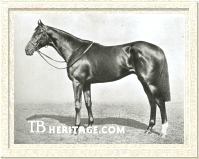
Watling Street
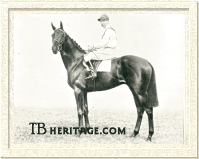
Pay Up
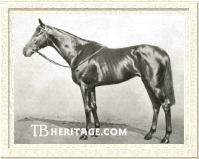
Kingsway II
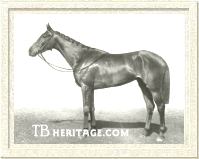
Tide-Way
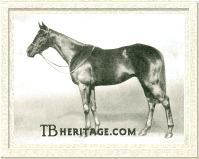
Honeyway
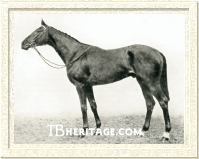
Full Sail
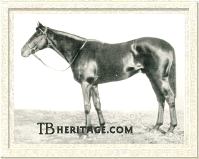
Fair Copy
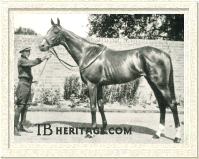
Ribbon
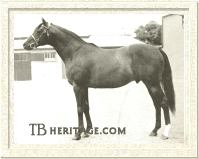
Solferino
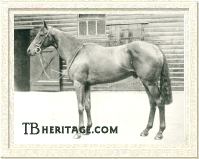
The Yuvaraj
| |
Fairway's Derby-winning son WATLING STREET (b.c. 1939 out of Ranai by Rabelais) was bred by Lord Derby and was a full brother to the filly Garden Path, winner of the 2,000 Guineas. Winner at two of the Chesterfield Stakes and second in the Coventry Stakes, at three Watling Street won the Shelford Stakes in his season debut, then ran second in the 2,000 Guineas, four lengths behind Big Game. He upset that rising star in the Derby, winning by a neck from Hyperides. He was later second in the St. Leger to the filly star and season champion Sun Chariot. Watling Street went to stud at four, but sired only a few stakes winners, with no top class runners. He was sent to the U.S. in 1952, stood the 1953 season at Claiborne Farm, and died later the same year. From his only American crop came the filly Go-Modern, dam of the champion racemare Summer Scandal.
Lord Astor's Fairway colt PAY UP (br.c. 1933 out of Book Debt by Buchan) won three races, including the Autumn Breeders Foal Plate at two. At three Pay Up won the Free Handicap Sweepstakes, prepping for the 2,000 Guineas, in which he also proved victorious. On hard ground at Epsom, he ran unplaced to *Mahmoud and came up lame, forced into early retirement. He was not a good sire and one of his few offspring of note was 1951 Grand National winner Nickel Coin.
*KINGSWAY II (br.c. 1940 out of Yenna by *Ksar) was bred by Lord Furness and won the 2,000 Guineas and placed in the Champion Stakes. His son *Royal Vale was imported to race with distinction in the U.S. and sired the good mare Court Circuit. *Kingsway II also sired the champion turf star of the 1950s, *Stan, and the success of these two led to his importation to the U.S. in the mid-1950s, where he sired three additional stakes winners.
GARDEN PATH (br.c. 1941 out of Ranai by Rabelais) was a Derby-bred full sister to Watling Street. At two, she was third in the Middle Park Stakes, and at three continued to behave like a tomboy by beating the colts in the 2,000 Guineas. She produced five winners, three stakes winners including Leading Light, Lunaria and Alfresco.
Lord Derby's homebred TIDE-WAY (br.f. 1933 out of Drift by Swynford) was a half-sister to Sun Stream and *Heliopolis, and full sister to Fairhaven. Her three wins included the 1,000 Guineas, and she later produced the champion juvenile Gulf Stream, himself a three-time leading sire in Argentina.
ANNETTA (ch.f. 1932 out of Caretta by Phalaris or Solario) won the Irish 1,000 Guineas and produced stakes winner Elan (by Elopement). Her stakes-placed daughter Annie Oakley (by Big Game) produced the good filly Tender Annie (Ribblesdale Stakes, third in the Oaks) and Coronation Stakes winner *Aiming High II, dam of Ruritania and Family Doctor.
One of Fairway's most important sire sons, Lord Milford's HONEYWAY (br.c. 1941 out of Honey Buzzard by Papyrus) was an enigma. A brilliant sprinter, winner of the July Cup at four, and at five, the Cork and Orrery Stakes, Victoria Cup, and King George Stakes, but he stretched to win the Champion Stakes at ten furlongs as well. Retired to stud, Honeyway, who was a ridgeling, proved infertile and so was put back in training at six, when he won the Coombe Stakes. Returned to stud, his fertility problem were resolved and he became a successful stallion. He sired Great Nephew (sire of Shergar and Grundy), Honeylight (1,000 Guineas), Dictaway (French 1,000 Guineas), Right of Way, Typhoon, and Sunny Way.
TAJ AKBAR (b.c. 1933 out of Taj Shirin by Gainsborough) was initially considered the superior to stablemate *Mahmoud, but ran second to him in the Derby Stakes, although he later won the Chester Vase at the same distance. He was not a raging success as a stallion in England, France, Hungary, or the U.S.
Lord Rosebery's FULL SAIL (b.c. 1934 out of Fancy Free by *Stefan the Great) was an older full brother to Blue Peter. He won the March Stakes and National Breeders' Produce Stakes, and ran second in the St. James's Palace Stakes. Sent to Argentina for stud duty, he proved his top class bloodlines by siring Seductor (sire of Sideral), Filon, Bullanquera, and Espadin.
FAIR COPY (br.c. 1934 out of Composure by Buchan) was bred by Lord Derby from a half-sister to the important mare Selene. A classy colt, he won the Middle Park Stakes and Chesham Stakes at two; won the Atlantic Cup, and placed in the St. Leger Stakes at three; and won the John Porter Stakes, and placed in the Coronation Cup and Eclipse Stakes at four. He went to stud in France where he was the Leading Sire in 1952, eventually returned to England, but was ultimately sent to Sweden. He sired Pactole (French 2,000 Guineas), Sayani (Cambridgeshire Stakes), and *Menetrier (Prix d'Ispahan, Prix de la Foret; sire in Canada, of the filly Victoria Regina who produced champion Viceregal and Leading Sire Vice Regent).
The Fairway filly RIBBON (b.f. 1940 out of Bongrace by Spion Kop) was the champion juvenile filly of her crop and beat colts in the Middle Park Stakes. At three, she placed second in the 1,000 Guineas, Oaks, and St. Leger Stakes.
Fairway's precocious son *HAIRAN (b.c. 1932 out of Harpsichord by Louvois) won the Coventry and Dewhurst Stakes at two. A half-brother to *Royal Minstrel and Qurrat-al-Ain, he was imported to stand in the U.S. and sired 13 stakes winners, but nothing of lasting fame.
Besides those already mentioned, other sons of Fairway that made an international reputation as sires included SOLFERINO (sire of Irish 2,000 Guineas winner Solonaway), MEADOW (in Argentina; sire of *Quibu), THE YUVARAJ (in Argentina; sire of Tatan, Tronado), DOGGER BANK (in Australia), WAY IN (in Italy, sire of Italian Oaks winner Feira de Rio), FAIR TEST (in South Africa), PIPING ROCK (in the U.S.; sire of Imperium, Squared Away), and *FAIRMOND (in Canada). |
Already noted are a two of Fairway's good producing daughters, TIDE-WAY and GARDEN PATH. Other important broodmares by Fairway include ZULAIKHAA (dam of French Derby winner Sandjar), AROMA (dam of *Persian Maid), QUEEN OF THE MEADOWS (dam of Vilmorin), TEMPLE BAR (dam of Cardington King), PAVING STONE (dam of Ship Yard who produced Busted), FAIR COP (dam of Fairly Hot), CUTAWAY (dam of Scollata who produced Irish Lass), CELESTIAL WAY (dam of The Golden Girl), FAIR DAME (dam of Dame Sol), and EMBUCHE (dam of the stayer Trimbush).
Thus, while Fairway was the inferior to his brother Pharos as a sire, it wasn't by much. The fact is, his many successful sire sons, which included Blue Peter, Fair Trial, Honeyway, Full Sail, Fair Copy, Meadow, and The Yuvaraj; dispersed his male line all over the globe. The male line still survive today, to compete with those of kinsmen Pharos and the other Phalaris sons *Sickle, *Pharamond II, and Manna.
--Anne Peters
|
|
|
|

